Making The Connection- Saltwater
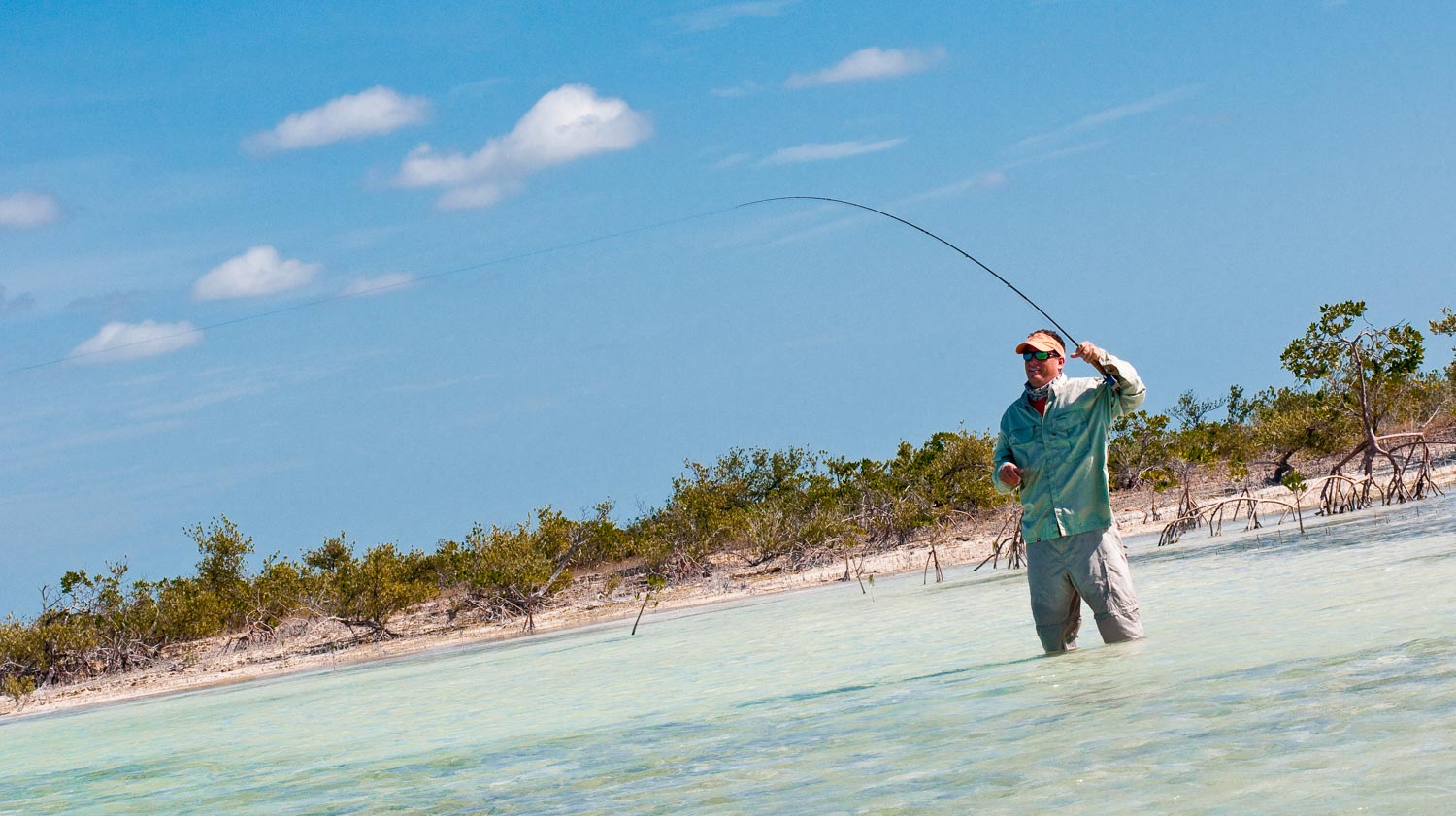
By Louis Cahill
How do you connect your leader to fly line when the pressure is really on?
This is sure to be a lively topic. I wasn’t aware this was such a hot button topic until I published an article by Devin Olsen titled, “Making The Connection,” and watched the comment section light up. Unfortunately a couple of readers missed the point completely. All too often, anglers are more interested in talking about how they do things than they are in learning something new.
Well, talking about how I do things is my job so here we go, I guess. I got to thinking about this after I made the mistake of responding to a post on Facebook. I know, what was I thinking? An angler was puzzling about the coating of his fly line separating from the core. He was using a nail knot to connect his leader to the fly line for bonefishing, and I made the comment that a nail knot was not a good choice for saltwater.
He responded, “I’ve been using a nail Knot for 20 years and never had a problem before now!”
Well, now he’s having a problem. Sure you can get away with lots of choices that aren’t the best choices, but when do you think the problem is going to happen? When you hook a half-pound schoolie or when you stick a 10-pound bruiser? I don’t know about you, but I want everything working in my favor, every cast.
Your fly line is a composite of two materials. A coating formed over some kind of core. The material of each varies depending on the line and the manufacturer. Think of your fly line as an electrical wire with a copper core and plastic insulation. A nail knot pinches the coating to the core. When you apply pressure to the leader, you’ve made a wire stripper. Pressure from the fish stretches the coating and not the core. You’re asking for a failure.
A nail knot is fine for species like trout.
Your tippet will generally fail long before your nail knot. Regardless, I believe in always making the best choice when it come to rigging. For my money, there are two good options for attaching line to leader in saltwater, where your connection is really going to get tested.
One good choice is
Read More »Reece’s Big Bandit
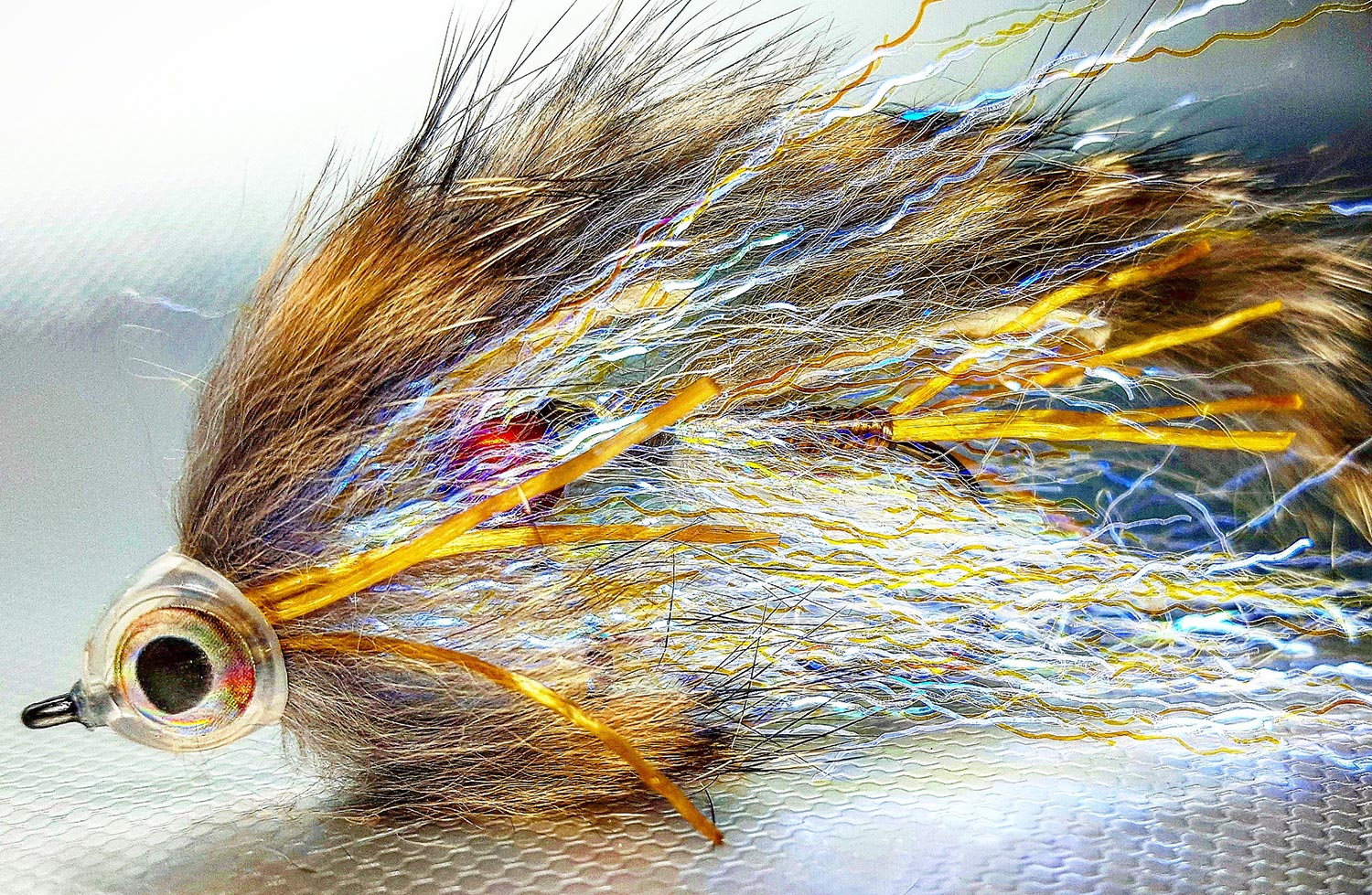
By Bob Reece
THE COMBINATION OF SIMPLICITY AND EFFECTIVENESS ARE APPRECIATED BY MANY FLY TIERS.
Constructed from three major body materials, the Big Bandit epitomizes this concept. Its simple construction eases the time invested in the tying process while its effectiveness on the water justifies a place in your streamer box.
In the world of double articulated streamers, the Big Bandit is a mid-sized model. Its profile effectively imamates creek chubs, young sucker fish, shiners and more. The ingredients of rabbit strips, MFC Sexi-Floss and Hareline Ripple Ice Fiber; create a realistic and reflective pattern. Capped off with a Fly Men Fish Mask, this streamer has the capability to match numerous bait fish species and subsequently draw large fish.
Long shanked hooks have frequently been used in the creation of streamer patterns. While they may not impact the effectiveness of the fly in in terms of takes, they do reduce the likelihood of fish-to-net success. The foundation at the heart of this pattern helps to turn the odds in the angler’s favor. Owner Mosquito hooks are designed with a short shank and offset hook point. The short shank reduces the leverage that the fish can apply during the fight. This reduction in leverage also reduces the chance of the hook coming lose. In addition to this, the offset point increases the likelihood of connecting with the fish on the set.
I’ve never spoken to a fly fisher that is opposed to bringing more large fish to net. As long as you as you fall into that category, the Big Bandit should find its way to the foam lining of your streamer box. Mix and match the material colors of this pattern to the norms of your local waters and begin reaping the rewards.
WATCH THE VIDEO AND LEARN TO TIE REECE’S BIG BANDIT.
Read More »The cutthroat and the sweet sixteen
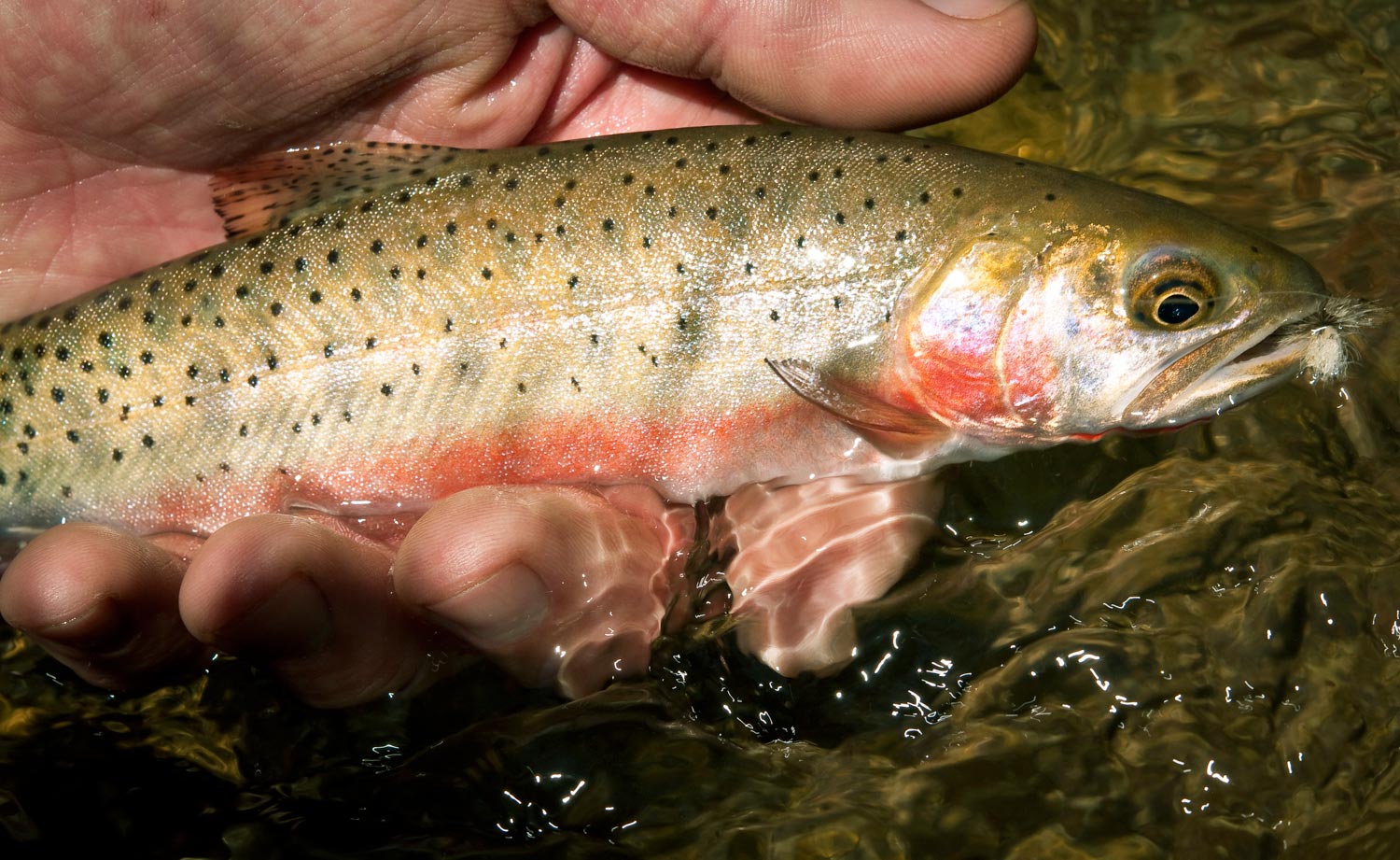
“HE IS OUR LEGACY. HE WAS LEFT HERE FOR US BY A LOVING FATHER, IF YOU BELIEVE IN THAT SORT OF THING, AND ONCE HE IS GONE WE WILL NEVER BE ABLE TO REPLACE HIM.”
My friend Gary Lacey did me a disservice while shooting clays one day. I fell one shell short for the round and he handed me his beautiful Beretta SO3 EELL to finish the round. I wish I had never touched that gun.
What a beautiful sensation it was when that elegant little side lock fell into place against my shoulder and the bright orange disk disappeared in a puff of black powder. How could I not covet this gun that I would never be able to afford? As pleasant to look at as to shoot the Beretta, with its lavish engraving and gold inlayed pheasant and duck, was a far cry from my clunky old Browning automatic.
Square jawed and utilitarian, it’s a poor gun for the job. The Browning A-5 Sweet Sixteen was never made for shooting clays, not that it matters, I’m not very good at it. Still, I enjoy shooting my Sweet Sixteen. Of all the guns I own, it is the most dear to me.
The gun belonged to my maternal Grandfather. He wasn’t, I suppose, what you would call a sportsman. He fished and hunted but when he did it was for food, not for sport. He taught me to shoot squirrels and catch sunfish. He taught me to
Read More »Last Cast Bonefish
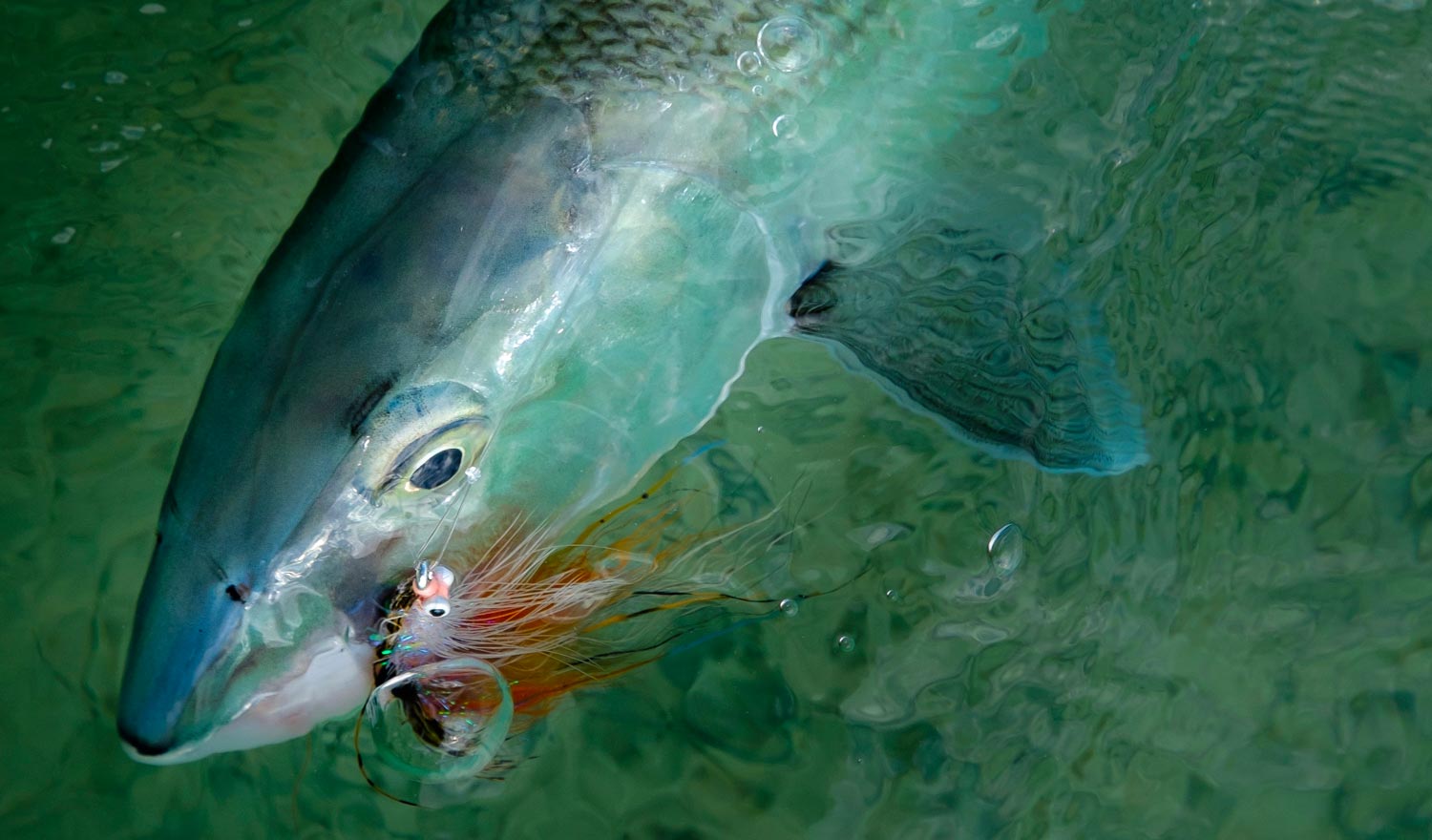
Bonefishing, for me, is the purest form of the drug.
I’m just returning from the first of three G&G Bonefish Schools in the Bahamas. This trip was more of a reunion than a school, with better than half of the anglers returning for the second or third time. I’m feeling pretty spoiled having spent a week in my favorite place, doing what I love with great friends. It’s incredibly rewarding to see these guys grow from complete beginners to really accomplished anglers.
We had a great week on South Andros. The island was spared any serious damage from hurricane Mathew and the fishery was invigorated after the storm. November is a great time for bonefishing in the Bahamas. The rains and the cooling weather bring big fish up from deep water and it’s a great time to land a trophy. This year we also had the super moon. The big tides make wade fishing scarcer but they bring out the big fish as well. We had one day of tough weather but the rest of the week was wonderful.
My friend, and G&G contributor, Owen Plair joined us on this week. A rockstar redfish guide from Beaufort, SC, this was Owen’s first time fishing the Bahamas. He was like a kid in a candy store and put his keen eyes and casting skills to work right away, landing a nice bonefish on the first cast of the trip. Several mornings, in fact, it seemed like we were on fish as quickly as we could strip our line off the reel.
Owen managed a one-in-a-million hookup on a big barracuda with his bonefish rod, while wading. The fly lodged perfectly in the corner of the cuda’s mouth and, after an aggressive fish on an eight weight, he tailed the fish expertly and, after a few photos, released it. That’s a second chance Bahamian cuda seldom see, as they are favorite table fare in spite of the risk of fish poisoning.
I love the art of targeting a hunting fish with a fly.
Read More »Catch-and-Release Practices for Small Fish

Handle the little guys with care if you want to catch them when they are big.
Catch-and-release practices among fly anglers are probably the best they have ever been. In part due to social media and the popularity of ideas like, “Keep ‘Em Wet.” More times than not, when you see a photo of someone holding a trophy size fish they have it cradled gently in the water. That’s great, but what about the little guys?
All of those trophy fish were small once and in order to get big they had to run a gauntlet of anglers and predators. Although there has certainly been improvement in the way the average angler handles fish, when I see one taking a beating, it’s usually a little guy. The thing is, these are the fish which are most vulnerable.
There are several common ways these small fish are mishandled.
The most common is time out of the water. While most anglers will net a big fish and let it rest in the net while they remove the hook, a net isn’t usually required for a small fish. Often they are simply snatched up to chest level by the leader. They are usually still pretty green so they squirm and make removing the hook a challenge and often spend way too much time out of the water.
There are a couple of other things that can go wrong when
Read More »The River Is Full Of Want
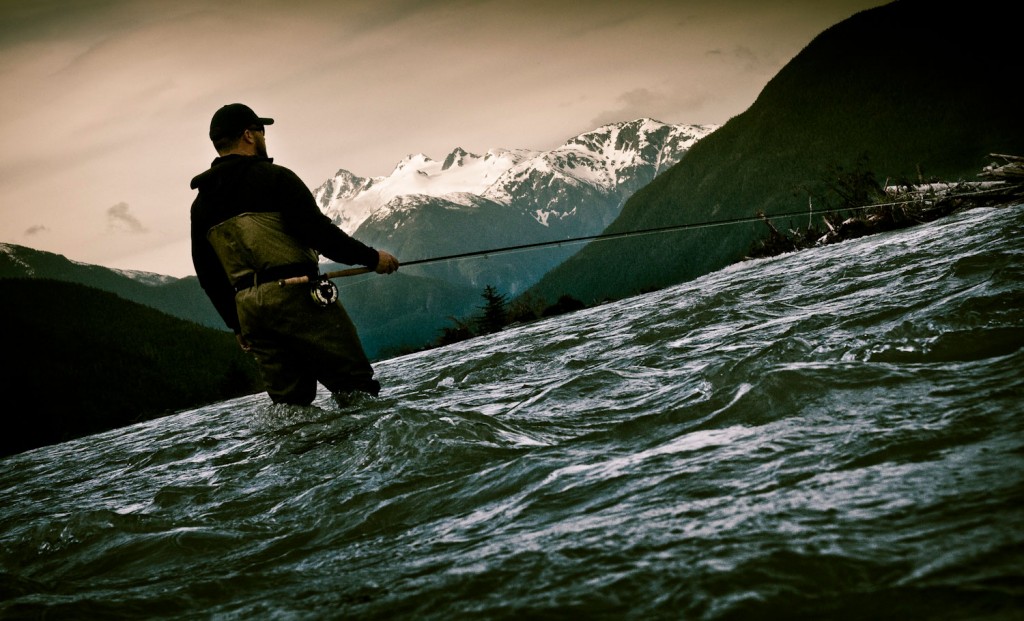
By Louis Cahill
“I DON’T DESERVE THAT FISH. I DON’T DESERVE THIS DAY ON THIS BEAUTIFUL RIVER. I DON’T DESERVE TO FISH WITH THESE GOOD MEN.”
I wade out into the rushing water of the Dean, farther than I should. The cold of the water grabs me around the waist. The current tugs at my footing. I feel the pebbles washing out from under my feet as they slide softly downstream against my will, looking for a home. I gather my running line and tuck it under my index finger, then I lift my thirteen-foot rod high into the air, anchoring my fly in the swift current in front of me. The wind blows and a cold mist creeps around my glasses and down my neck. I sweep the rod round, making a big D loop, watching the rod, keeping it loaded, then draw the butt back hard to my chest. I roll the grip clockwise so that the guides face upstream and watch the bright green running line draw shapes in the air against a backdrop of dark clouds, like a kid writing his name with a sparkler on a summer night.
The line disappears through the guides and nearly a hundred feet away I see the splash as my weighted fly meets the river. I mend the line and tell myself that my feet will find something solid as I step with the rush of water, once, twice, three times. On the horizon, just over the big log jam, I can see the silver band of salt, the Pacific. Below the next run and the next, maybe four-hundred yards. The river hasn’t far to go and it’s impatient, running like children to the tree on Christmas morning. They call this run Instant Backing and I know that if my fly finds its mark, I’ll see why. I carry my rod tip upstream until I feel the weight of the river on my line. Slowly I swing the fly, I feel the strength of the water, I wait for the pull, I stare into the river and I want.
***
The Atlantis Restaurant, in Cherry Grove, South Carolina, between Myrtle Beach and Cape Fear, is a stark little beach town pancake house. It is completely unremarkable. Shabby, in fact, but it has always been special to me. Every year, on my family’s Labor Day beach trip, my father and I would slip out to the Atlantis while everyone else was asleep for breakfast. He would have eggs, over easy and bacon and I would have pancakes. Since I was little I loved having breakfast out with my father. Just the two of us in the quiet of the morning. Our complicated relationship worked well, within the simple framework of breakfast.
My father has been gone a long time now but I still find walking into that pancake house comforting. For that reason and to share my memories, I took my wife there a few years back. I got more than pancakes.
The Atlantis is an odd place at best. It doesn’t suffer from any sort of interior decoration, let alone design. The walls are glossy white with blue trim. There are a few photos from some foreign country, maybe Greece, and an aquarium next to the register containing nothing but water and a few turtles. There are some hand drawn signs with a vaguely religious theme. My favorite is a dolphin with a voice bubble that says, “I love Jesus!”
The employees seem to be from somewhere far away too, but I don’t think it’s Greece. There is a young girl, sixteen maybe, who seems particularly distant. Thin and strawberry blond with freckles she has, what combat veterans call, a thousand yard stare. Not vapid exactly but not entirely present. She waits on my wife and me that morning. After my wife orders the girl turns to me. “I want pancakes,” I say smiling. “Really?” she replies as if truly puzzled. After a long pause in which she stares at me as if I were a painting in a museum, she asks,
“What’s it like to want?”
I was completely unprepared for such an existential question before I’d even had my coffee. Not that coffee would help me find the answer, but it does make me a nicer person. I consider the question briefly, on several levels ranging from, “is this the meaning of life” to “are you out of your fucking mind” before deciding on my answer.
“You know, it’s like when you want a tip.”
The pancakes are tasty, in spite of having surely been spit on and I want to think that I’ve put that question to bed, but I haven’t. Far from it. That annoying little teenager had done something to me. I couldn’t get it out of my mind. “What’s it like to want?” For the next few years I carry that question around in my head as a litmus test. I conjure up every blown decision in my life, every misstep that lead to unhappiness and asked myself, “why did I do that?” The answer is always the same. Want.
I look around me and suddenly I see it everywhere. Want. It’s like the air we breath. We are all consumed by want. It’s like the strings on a marionette, once you see them you can’t blot them out. They’re all you see. That little red-headed waif in the apron had looked right through me and knowing only that I like pancakes had said, more or less,
“Here’s your problem, stupid.”
***
The Dean River is moody, the kind of river that kills fisherman, at least one that I know of. It’s fickle and has a temper, not like the elder rivers where I’m from, that found their channels long ago. The Dean is young and impulsive. This week it has leapt from its banks, coming up six feet the day my group arrived. It has decided
Read More »Reece’s North Park Nasty
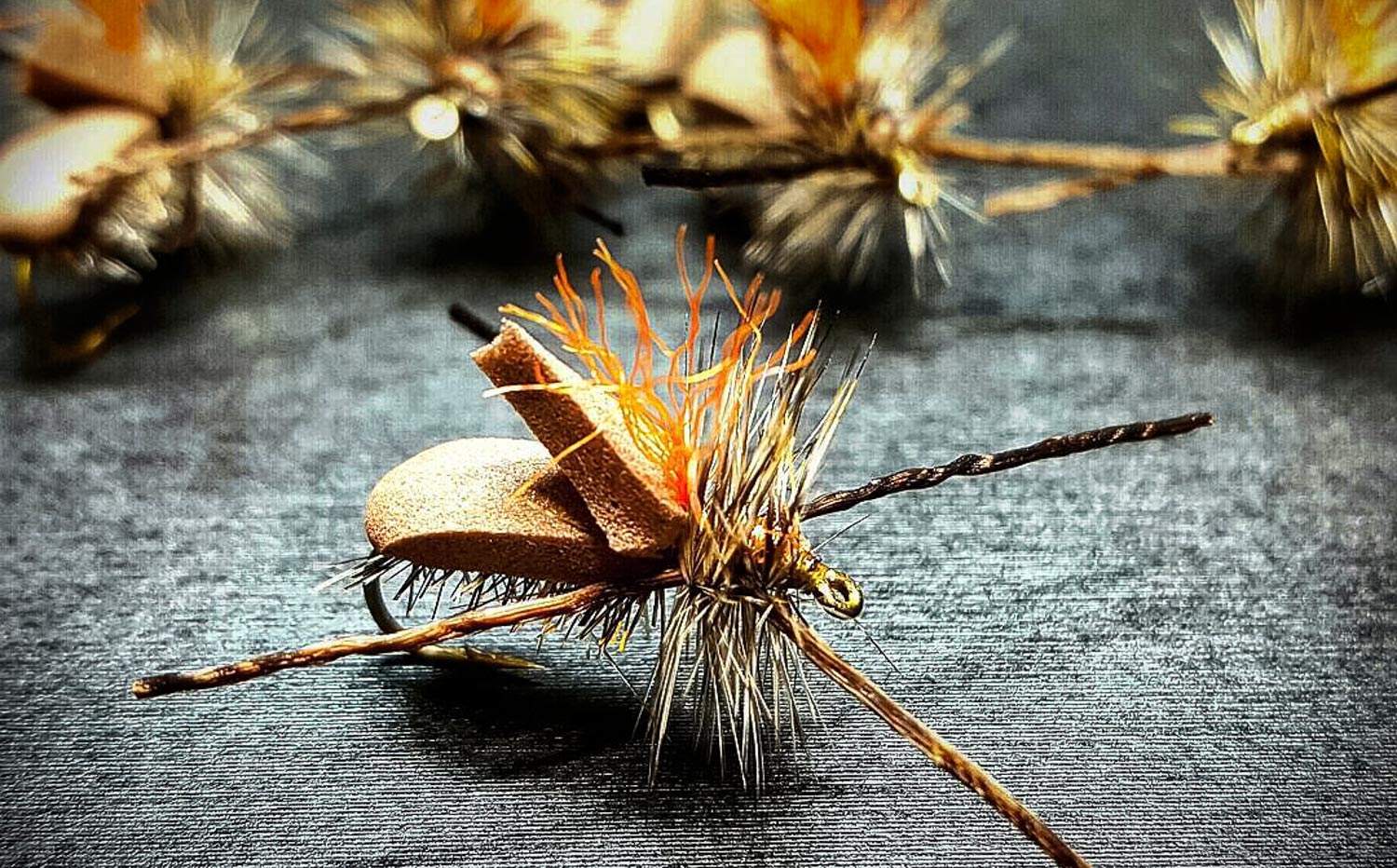
By Bob Reece
Terrestrial season is a high point in my angling year.
Some of the fisheries that I frequent require highly accurate imitations to achieve ultimate success. Others do not. For those bodies of water I created my North Park Nasty.
The marriage of buggy and buoyant always brings a smile to my face. This pattern has both. The simple use of a grizzly hackle and Sexi Floss legs create the underwater profile of this pattern. 2mm tying foam forms the top surface, greatly bolstering the ability of this bug to float.
With the chaos that forms the schedules of most tiers everyday lives, free time is a valuable commodity. The North Park Nasty compliments this fact by requiring a very minimal amount of time to create. In addition to this, the techniques used in its creation lend themselves to tiers of all skill levels.
When fishing this bugified creation, I keep it tight to the bank or available structure. While I sometimes run a small dropper off it, I prefer to fish it solo. Despite its larger profile
Read More »Improve Your Casting With A Dog

A good dog can help you catch more fish.
Most anglers never pick up a fly rod, other than to fish, but making time for consistent and effective casting practice makes a huge difference in your performance on the water. Even anglers who understand this, struggle to make it happen. We don’t get the same pleasure from practice as we do from fishing. None of us started fly fishing because we liked hanging out in the yard.
So here’s an idea to make your practice time more enjoyable and more productive. Take a dog. I’ve been doing this lately and discovered something I didn’t expect. Bear, the Great Pyrenees pictured above, has been living with us while his real mon is having cancer treatment. Like all dogs, Bear needs plenty of time outside. There’s a great park just down the street so I take Bear on regular missions.
So immediately I’ve cleared the biggest hurdle on the road to regular practice.
Making the time. Bear makes sure that I make the time. Like most dogs he wants to sniff every blade of grass in the park. I started taking a rod and some targets to pass the time. Bear gets some relaxed play time and I get my practice in. Everybody wins.
Casting to targets is OK practice for some fishing situations. It does give you the chance to focus on the fundamentals of the cast and improve loop control and accuracy. But as I’ve written before, it does not help you develop good target picture, an important skill in any sight fishing scenario. As I was practicing one afternoon, I noticed something about Bear. His sniffing reminded me of something. He’d get on a scent and root around following it, a lot like a bonefish will do when hunting on a flat.
I started making presentations to Bear. He’d
Read More »Getting Started In Saltwater Fly Fishing
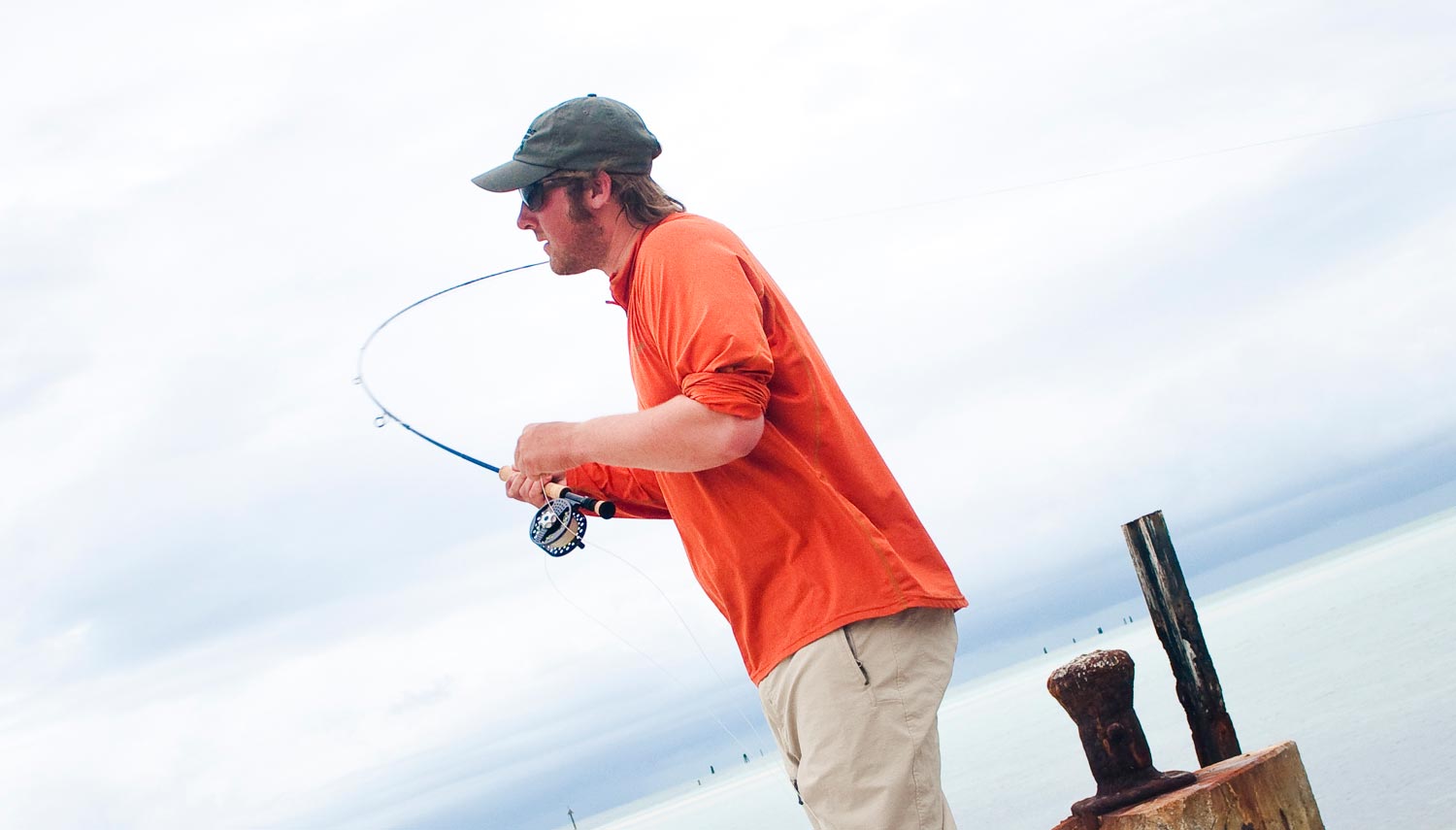
By Owen Plair
Saltwater Fly fishing is sort of like the X-Games of Fly Fishing.
Not only are you catching bigger fish in saltwater but the fish that you are targeting fight a hell of a lot harder than most freshwater fish! Whether it’s a 150 lb Tarpon doing the leap of faith oceanside off Islamorada or a GT ripping 100 yards of backing off in mere seconds off the coast of South Africa. There are tons of these kinds of species that make saltwater fly fishing seem intense but also desirable. Who doesn’t want to catch a bad ass fish on fly, sight fishing?
Now don’t get me wrong, I absolutely love freshwater fly fishing, and always will, because fly fishing is fly fishing, no matter what species of fish you’re targeting. Now I’m sure a lot of you have never done any saltwater fly fishing and that’s what this article is for– to get you started. Because after watching videos, reading articles, and seeing pictures, it’s time to make the move.
HERE ARE A FEW KEY THINGS TO GET YOU STARTED.
The number one thing is your cast. You absolutely positively need to learn how to Double Haul! There are tons of instructional videos out there but I always feel a good Casting School at your local fly shop or casting lesson will be the best. Before you make that move you’ll need to get your first saltwater setup. Saltwater rods have a very different action and you’re gonna need something to practice with.
I always recommend buying a 4pc 8wt rod with some kind of large arbor reel, basically a setup that will work for Redfish, Snook, Bonefish, Baby Tarpon, and many more saltwater species. These days you can get a pretty decent rod and reel combo for around $200-$300, which is a good way to start. I always
Read More »How to Fly Fish Straight Sections of Trout Water
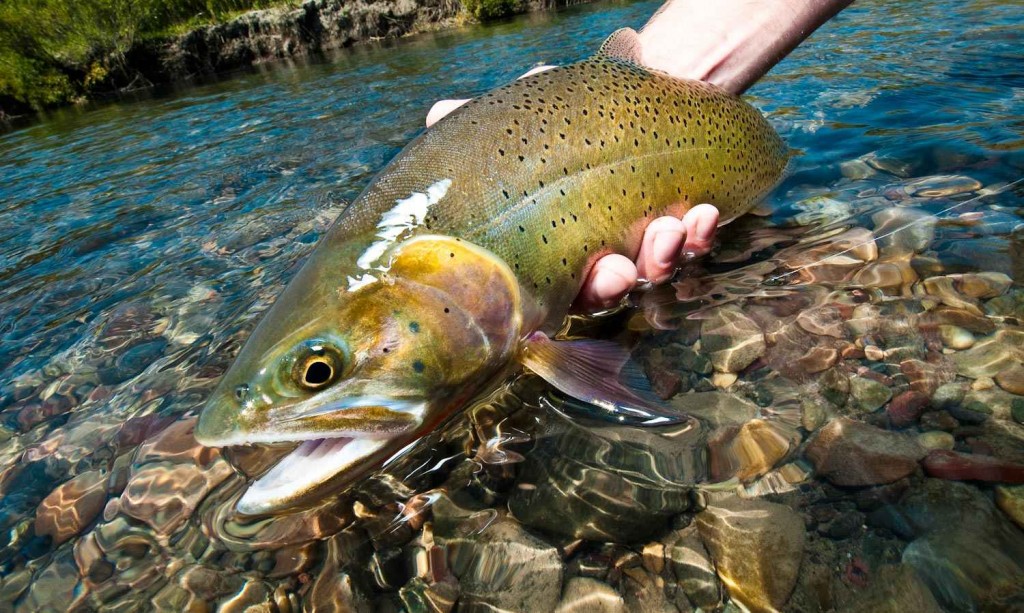
It’s your lucky day. You’ve somehow managed to get away from your busy work schedule and find time to spend a few days fly fishing for beautiful cutthroat trout out west.
You’ve brought several trout to hand fishing a series of S-bends, and you feel like a hero. Life is good, right? Unfortunately, the hot fishing is about to slow significantly as you round the bend in the river and notice the river flows straight as an arrow for the next several hundred yards. There’s very little mid-stream obstructions and no well defined current seams. Furthermore, the water depth is consistent bank to bank. You fish for a while, working your way upstream blind casting, but you’re not having any luck. You find yourself getting frustrated because you can’t figure out where the trout should be holding, and there’s no rising fish. What should you do?
When I find myself in this situation, I focus on presenting my flies against the banks. When there’s no obvious current seams or in-stream structure providing depth change or current buffers, cutthroat trout will generally prefer holding close to the banks. The water current running along the banks causes friction, and this friction slows down the current speed making it a much more efficient place hold and feed. Because all trout prefer to
Read More »